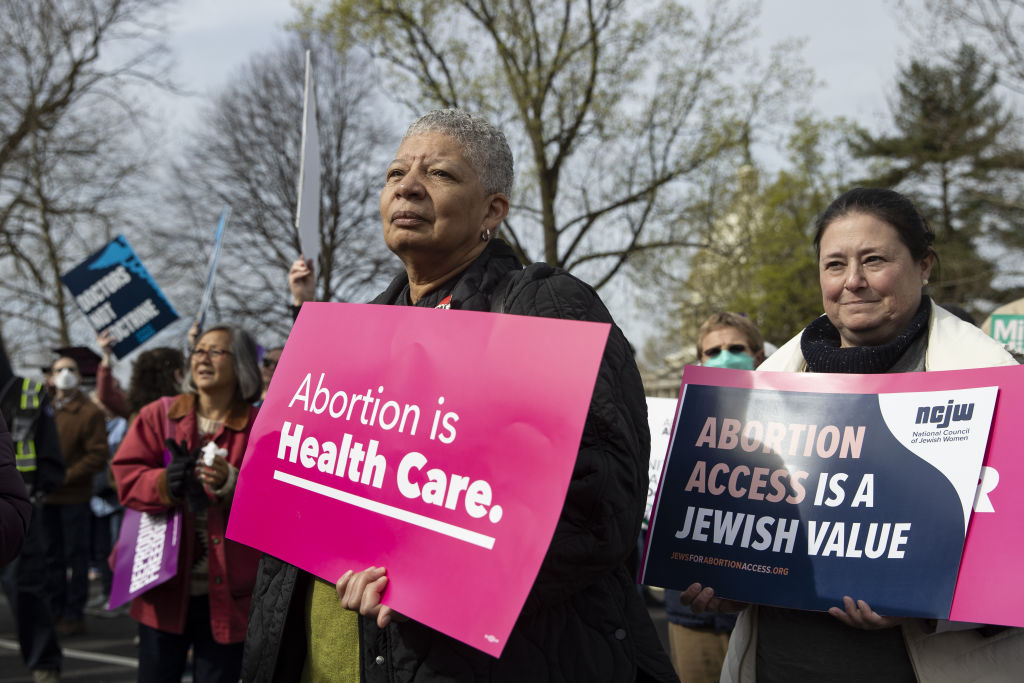
The Society of Family Planning released its seventh #WeCount report on Aug. 7, measuring the number of abortions in the United States each month from April 2022 through March 2024. The report revealed the number of abortions in the first three months of 2024 was significantly higher than abortions in the first three months of 2023 and 2022.
The total number of abortions nationally grew from 84,690 in April 2022, to 102,350 in January 2024—a 21 percent increase in less than two years, despite abortion bans in 14 states and severe restrictions in many other states.
“While the volume of abortions has increased, we know that this isn’t the full story,” said Alison Norris, M.D., Ph.D., #WeCount co-chair and professor at The Ohio State University’s College of Public Health and co-principal investigator of the Ohio Policy Evaluation Network. “Even as we see the increase in abortion volume nationally, the burden on an individual living in a state with an abortion ban is enormous, especially if they need in-person abortion care.”
The #WeCount report found between 94,670 and 102,350 abortions monthly between January and March 2024, with a monthly average of 98,990. These numbers only include clinician-provided abortions, not self-managed abortions outside of the formal healthcare system.
#WeCount attributes the overall increase in the number of abortions since April 2022 to decreased barriers to abortion care, including “reduced burden of cost and travel by use of telehealth, increased financial support for low-income abortion seekers, and improved access via care navigation from practical support groups and public health departments.”
Telehealth abortion made up 20 percent of all abortion care nationally in March 2024, an increase from 4 percent nationally in April 2022.
From January to March 2024, there were an average of 19,700 telehealth abortions per month—a 14 percent increase over the average monthly number from October to December 2023 and a 28 percent increase over the monthly average during January to March 2023. By contrast, the national monthly average of in-person abortions in January to March 2024 was 1 percent lower than January to March 2023.
In the 14 states banning abortion, #WeCount estimates that approximately 208,040 abortions would have occurred in-person in those states in the 21 months since Dobbs if these states had not banned abortion. Many of these people obtained abortion out of state or through telehealth.
The proportion of abortions provided by telehealth in states where the service is permitted ranged from 7 percent in New York to 57 percent in Wyoming from January to March 2024. The average number of virtual-only telehealth abortions was up by 59 percent in Kansas and 53 percent in Virginia, whereas the number declined by 2 percent in California and New York. Telehealth abortion is a particularly critical avenue for abortion access in rural areas far from brick-and-mortar clinics that are most often located in urban areas.
One factor contributing to growth in the number of telehealth abortions was an increase in brick-and-mortar clinics providing this service. The national average per month of brick-and-mortar telehealth abortions increased 33 percent from 1,400 per month during the period of October to December 2023 to 1,900 per month during January to March of 2024,
“Telehealth abortion is making a critical difference for people seeking abortion care in this increasingly restrictive environment,” said Dr. Ushma Upadhyay, #WeCount co-chair and professor at the University of California, San Francisco’s Advancing New Standards in Reproductive Health (ANSIRH). “Telehealth also eases the surges and cuts down on wait times at abortion clinics providing in-person abortion care.”
Almost half of telehealth abortions were obtained by people living in states that ban or restrict clinicians located within those states from providing abortion services. These patients were served by clinicians based in six states—Massachusetts, Washington, Colorado, Vermont, New York and California—that have provider shield laws allowing clinicians to provide telehealth abortion to people living out of state. These laws protect clinicians from criminal and civil actions initiated in another state regarding any legally protected healthcare activity in the state, and protect clinicians from loss of a medical license and malpractice insurance relating to provision of abortion healthcare.
Telehealth abortion is making a critical difference for people seeking abortion care in this increasingly restrictive environment.
Dr. Ushma Upadhyay, #WeCount co-chair
Telehealth abortions provided under shield laws averaged 9,200 per month from January to March 2024—46 percent of the 19,700 telehealth abortions per month nationally. Shield state clinicians provided an average of over 6,700 monthly to people in states with total abortion bans or 6-week bans, and nearly 2,500 monthly telehealth abortions to people in states with restrictions on telehealth abortion. In the nine months from July 2023 to March 2024, over 65,000 people living in states with bans or telehealth restrictions accessed medication abortion provided under shield laws.
Five organizations now provide telehealth abortion services to people in states with abortion bans or restrictions on telehealth abortion:
- Aid Access
- The Massachusetts Abortion Access Project (The MAP)
- Abuzz
- Armadillo Clinic
- We Take Care of Us
The organization Plan C maintains a website with an updated list of options for accessing telemedicine abortion services in all 50 states.
Two additional states—Rhode Island and Maine—recently passed telehealth provider shield laws, bringing the total number of states protecting providers serving people living in states with abortion bans to eight.
“Abortion care provided via telemedicine by providers operating under shield law protections are a lifeline for women, transgender men, and gender non-binary individuals in states with abortion bans, whose next best option may be to travel hundreds of miles to reach an abortion clinic,” said Dr. Angel Foster, co-founder of The MAP. “By providing safe, effective, FDA-approved medications to patients in all 50 states, we’re doing what we can to mitigate the Dobbs decision’s tremendous damage to abortion seekers’ reproductive health and autonomy.”
Before telehealth abortion became available, patients had to travel hundreds of miles to brick-and-mortar clinics, walk a gauntlet of protesters and pay on average $560 for medication abortion. Now they can obtain abortion pills by telehealth from the privacy of their own homes and have them mailed directly to all 50 states with prompt delivery for a sliding scale fee of up to $150. Telehealth abortion first became temporarily available in July 2020 because of the COVID pandemic. In December 2021, the FDA permanently lifted a long-standing in-person dispensing requirement, permanently allowing telehealth abortion.
The #WeCount numbers do not include people who obtained abortions outside of the medical system, including for free from community networks and online for as little as $35 with five-day delivery. Research estimates that the total number of people obtaining abortions outside of the medical system in the six-months after-Dobbs, from July 1 to December 31, 2022, increased by 26,055 abortions. Most of those people were served by community networks.
Red State Access reports they have served close to 60,000 people since 2022. Their community support providers are totally free, serve all gestations and provide accompaniment for residents in restricted states.
Guttmacher Institute has estimated that 63 percent of all abortions in 2023 were done with medications versus 37 percent done procedurally. Medication abortion increased from 31 percent of all abortions in 2014 to 63 percent of all abortions in 2023—more than doubling in just ten years. The recent #WeCount report indicates this percentage is likely to increase in 2024. Meanwhile, the Project 2025 agenda for the next conservative president has pledged to ban abortion pills nationwide by revoking FDA approval of mifepristone and criminally prosecuting anyone who mails abortion pills.
Up next:
U.S. democracy is at a dangerous inflection point—from the demise of abortion rights, to a lack of pay equity and parental leave, to skyrocketing maternal mortality, and attacks on trans health. Left unchecked, these crises will lead to wider gaps in political participation and representation. For 50 years, Ms. has been forging feminist journalism—reporting, rebelling and truth-telling from the front-lines, championing the Equal Rights Amendment, and centering the stories of those most impacted. With all that’s at stake for equality, we are redoubling our commitment for the next 50 years. In turn, we need your help, Support Ms. today with a donation—any amount that is meaningful to you. For as little as $5 each month, you’ll receive the print magazine along with our e-newsletters, action alerts, and invitations to Ms. Studios events and podcasts. We are grateful for your loyalty and ferocity.





